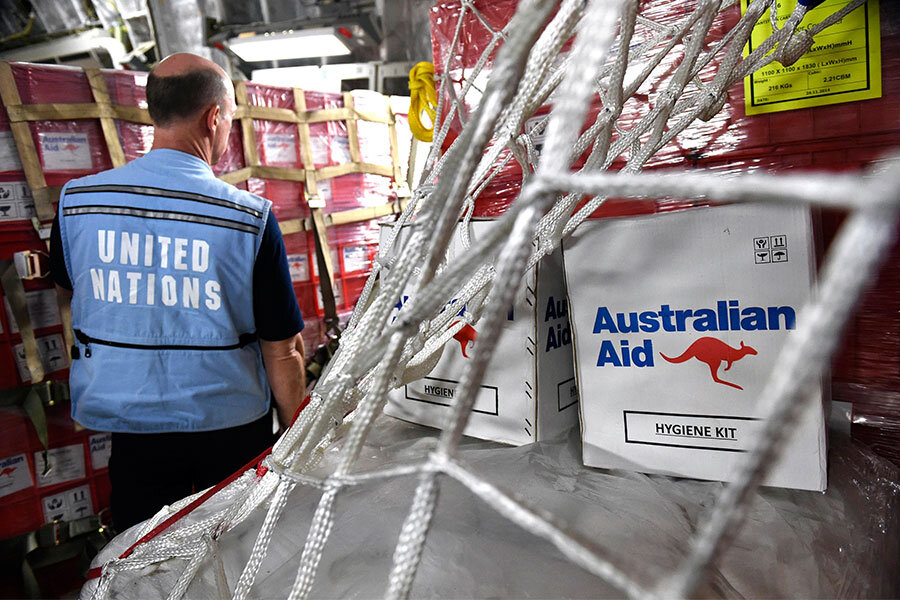Cyclone Pam relief efforts gain momentum in battered Vanuatu
Loading...
Five days after Cyclone Pam tore across the string of islands that make up Vanuatu in the fiercest storm to hit in the world since Typhoon Haiyan in 2013, the full extent of damage is still unknown. However, aid workers and officials are crediting early warning systems and a well-prepared society for keeping the death toll low.
It’s been a challenge delivering aid given the devastation. The storm damaged nearly all homes on Tanna, the southern island, and destroyed almost all its crops.
Aid workers have reported remote island communities painting large white “H”s on the ground and using mirrors to try and signal for help, reports Reuters. A small planeload of fresh water and food reached Tanna today, and a ferry left from the capital for Tanna with more aid expected to arrive by Thursday. Relief forces have been sent from Australia, Britain, France, and New Zealand.
An estimated 3,300 people are homeless and 24 people have been confirmed dead in the series of more than 80 islands that make up Vanuatu in the South Pacific, the BBC reports. Both numbers are expected to rise as relief workers reach more islands. UNICEF estimates some 60,000 children are in need of emergency response and the World Food Programme reports about two-thirds of the population – or 170,000 people – have been affected by the cyclone.
But the scattered geography of residents, combined with the advent of cell phones and real-time storm tracking, helped avoid a more sweeping death toll, officials say. According to Reuters:
Updates and colour-coded warnings were sent by radio and SMS, enabling residents to trace the path of the cyclone on maps specially printed in every telephone book, said Oxfam's Vanuatu country manager, Colin Collett van Rooyen….
Many villages are built further back from the shore to avoid storm surges and tsunamis, and most have at least one sturdy building to retreat to. Even the spreading roots of banyan trees that have survived centuries of storms are also sometimes used as shelter if houses are destroyed.
"People do know they can't stay in their homes at the peak of the cyclone and they will evacuate to more permanent structures," said Anna Gero from the Institute for Sustainable Futures at University of Technology, Sydney. "They also know to look out for one and another."
Some survivors have questioned a lack of visible relief support from the Vanuatu government, The Guardian reports. Prime Minister Joe Natuman urged citizens to “plant their own gardens and survive,” and the government struggled to provide immediate aid because communication networks were down.
Vanuatu resident Ruth Louhman told the Guardian that her home was one of only three in her community to escape destruction. “Wipeout in a minute and we have to start again,” she said while replanting cabbages on Wednesday. “We’re eating starches, fruits and we cannot survive if we don’t eat the ones fallen from the trees and the ones that were pulled up.”
Vanuatu is one of the world’s poorest countries. About 80 percent of its population works in small-scale agriculture. And it’s not stranger to disaster: the island chain sits on the Pacific Ocean's “Ring of Fire” and experiences frequent earthquakes and tsunamis. Rising sea levels also pose a mounting threat.








